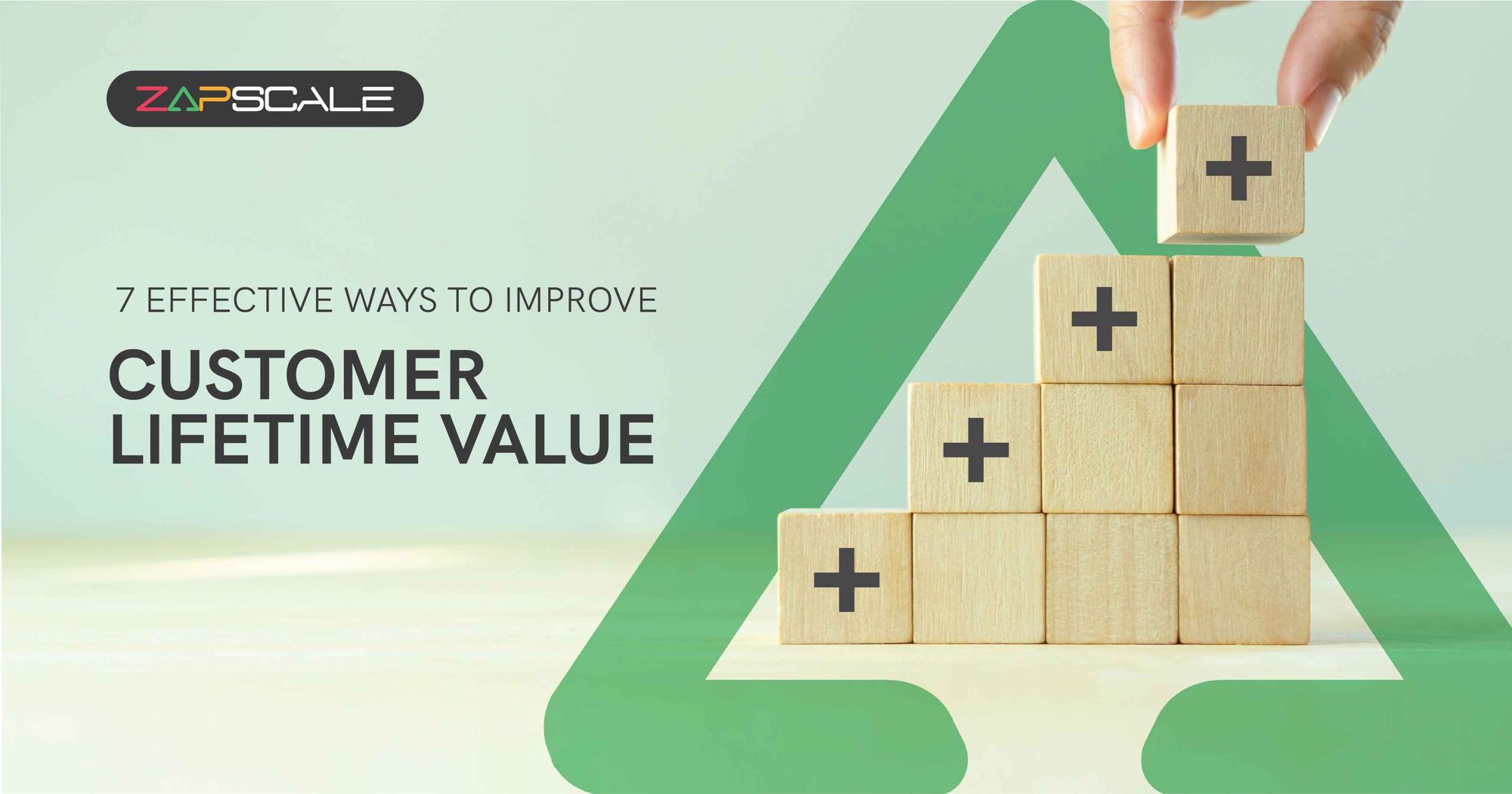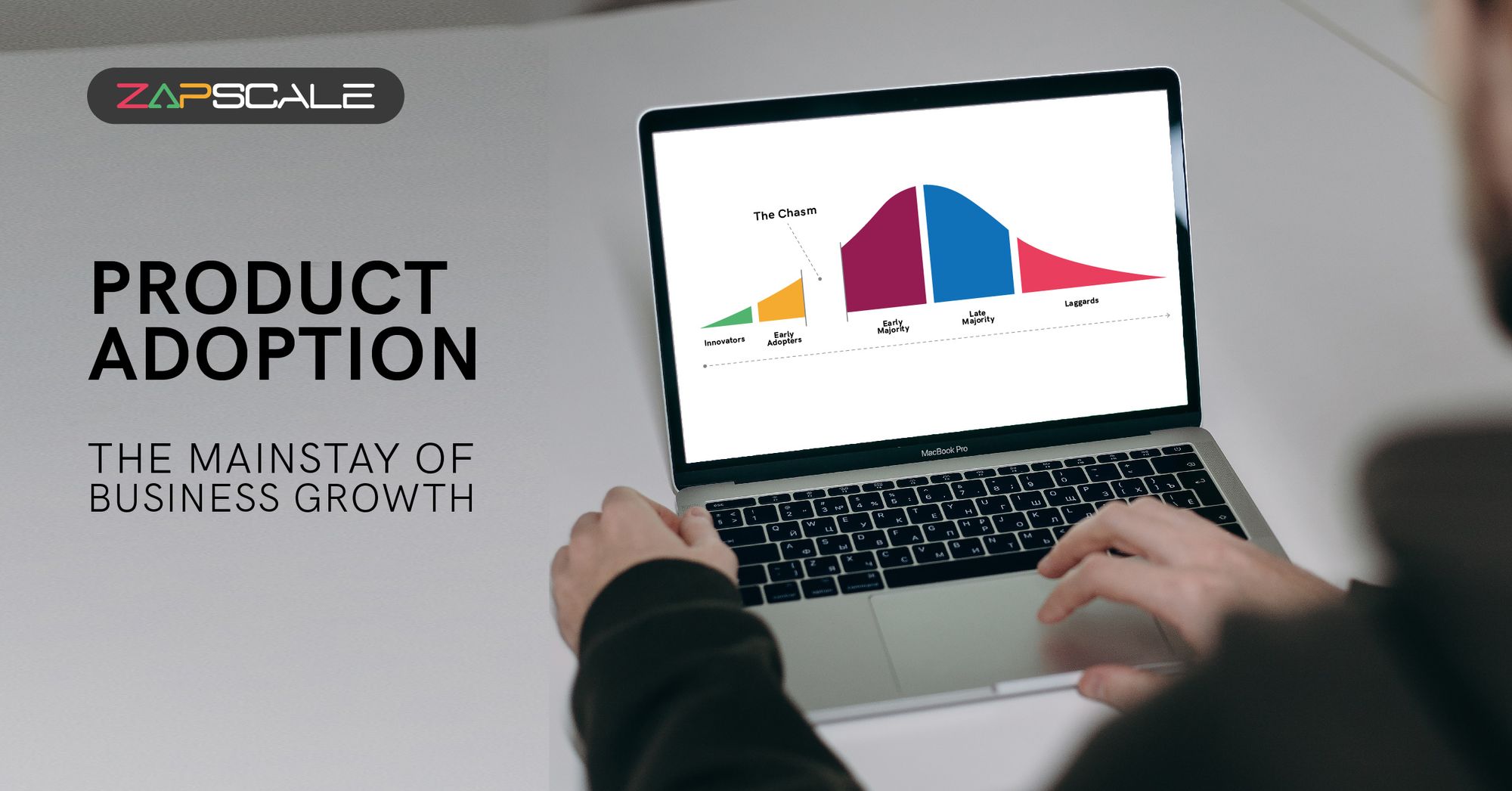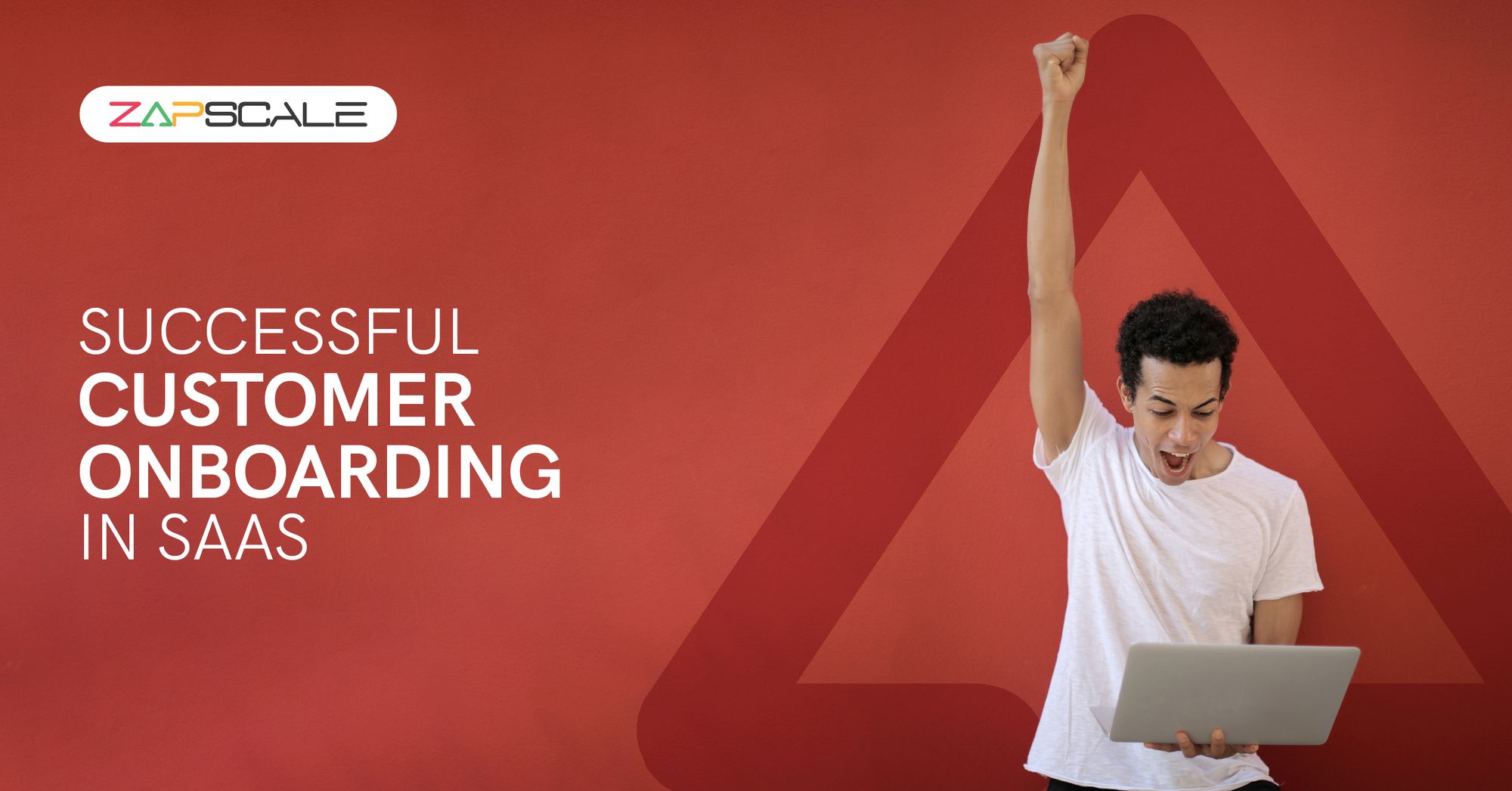CATEGORY > Customer Onboarding
15 Customer Onboarding Best Practices to Hook and Retain Customers from Day One!
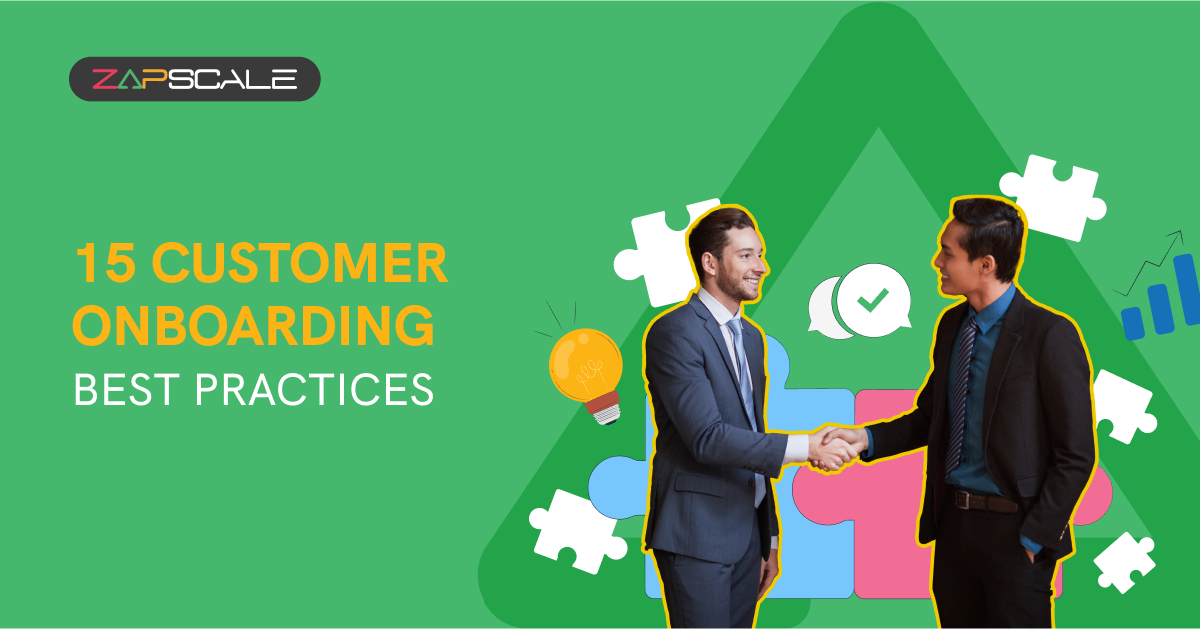
Ever felt like a lost tourist in a bustling city, desperately seeking directions and support? Well, that's the last thing you want your customers to experience during onboarding!

So, it's not just about ticking off boxes – it's about creating a memorable experience that leaves a lasting impression. A clumsy onboarding process can leave your customers feeling disoriented and overwhelmed.
What is Customer Onboarding?
Customer onboarding refers to the process of guiding new customers or users to effectively adopt and use your product. It's all about helping them get up and running quickly to achieve their goals with the platform.
It's similar to setting the stage for a fantastic performance, where every interaction, from the initial 'hello' to the final 'thank you,' is carefully designed to ensure maximum satisfaction and success. Successful customer onboarding is the perfect blend of clear instructions and helpful guidance, to ultimately empower customers to navigate your product with confidence and ease.
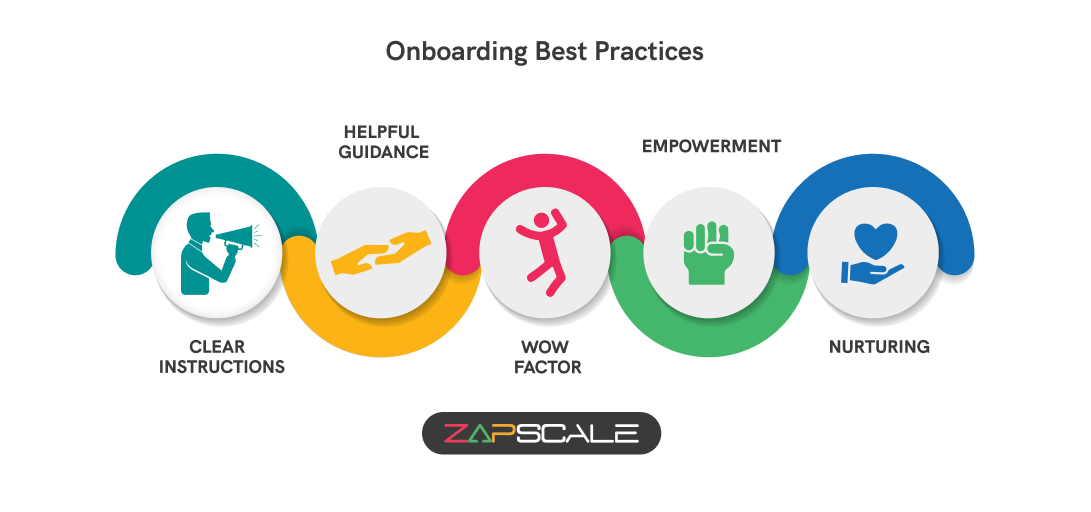
Why Should Businesses Care About Customer Onboarding Best Practices?
You've spent months (maybe years) crafting a revolutionary SaaS product, but new users get lost in a complex onboarding process. Frustration sets in, features remain unexplored, and your potential patrons become churn statistics. No one wants to be in such a situation.
Here's how a smooth onboarding helps a SaaS business:
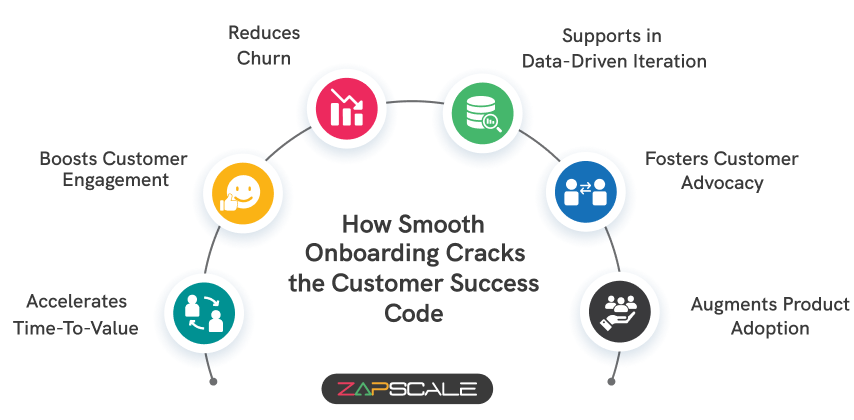
1. Boost Customer Engagement
The more a customer understands your product and its capabilities, the more likely they are to use it actively. A seamless customer onboarding sets the tone for the customer relationship, fostering a sense of excitement and anticipation, priming users for a deeper emotional connection with your product, and continued product exploration.
2. Reduce Churn
A confusing onboarding process is a churn factory. By making it easy for users to understand the value of your product, you keep them engaged and coming back for more.
3. Accelerate Time-to-Value
Nobody wants to spend hours figuring out how to use your product. A smooth onboarding helps users see the "WOW" factor faster, which maximizes the benefit they get from day one.
4. Augment Product Adoption, Upselling, and Cross-Selling
A well-designed onboarding flow encourages users to explore the features and capabilities of your product to its full potential, leading to higher adoption rates and opportunities for upselling and cross-selling additional features or complementary products.
5. Foster Customer Advocacy
A positive onboarding experience helps turn users into brand advocates who can drive organic growth. Happy, empowered users become your biggest cheerleaders. A smooth onboarding empowers them to explore, share, and recommend your business to their known ones.
6. Data-driven Iteration
Customer Onboarding is an invaluable tool for gathering feedback and user behavior data. By closely monitoring user interactions during the onboarding process, you can identify pain points, optimize workflows, and continuously improve the user experience.
By prioritizing a delightful and engaging introduction to your product, you are laying the foundation for long-term customer success, driving growth, and solidifying your SaaS solution as a standout in the market.
15 Successful Customer Onboarding Best Practices for 2024
Remember, you're a CS superhero and your mission is to swoop in and save the day for your customers. But without a proper entry, they might mistake you for a villain!
A one-size-fits-all approach just won't cut it anymore. From personalized messages to tailored product demos, learn how to make every customer feel like a VIP from the beginning with these 15 best onboarding practices.
1. Pre-Signup Research
Tap into website traffic data, demo recordings, or pre-signup questionnaires to understand new customers' needs and craft onboarding content. By demonstrating upfront that you know their specific challenges, you prime users for a more engaging and effective onboarding experience.
2. Onboarding Icebreaker
Formal is good, but FUN is better. Start with a fun, interactive conversation that introduces key features and functionalities.
Personalize your welcome message with the user's name and a brief touchpoint referencing their sign-up reason. This small gesture sets a positive tone and makes them feel valued from the very beginning.
3. Simplified Sign-Up Process
Complexity is bad. Make it easy for customers to create an account and get started with your SaaS product. Minimize the number of steps and fields required during sign-up.
4. Interactive Onboarding > Instruction Overload
Create interactive tutorials and explainer videos instead of bombarding users with text-heavy instructions. Think screen recordings, step-by-step walkthroughs, or even gamified elements with points and badges. These methods make learning engaging and memorable, fostering a positive association with your product.
5. Persona-Based Path
Tailor the onboarding journey based on user type, roles, industries, use cases, and subscription tier. Personalized experiences can increase engagement and product adoption.
6. Streamline For Efficiency
Automate where possible. Use automated emails, pop-ups, and in-app prompts to guide users through specific features and encourage them to take the next step. Don't leave them wondering what's next!
7. Peer-to-Peer Onboarding Communities
Build one where customers can connect and learn from each other's experiences. This facilitates knowledge sharing, best practice sharing, and peer support, enhancing the overall onboarding experience and fostering a sense of belonging among users.
8. Offer Contextual In-App Guidance
Instead of generic tooltips, provide contextual in-app guidance that adapts to each user's behavior when they need assistance during onboarding.
9. Gamify the Onboarding Process
Implement gamification elements like points, badges, or leaderboards to make onboarding tasks more interactive and enjoyable. A little friendly competition can boost user motivation and make the onboarding process more memorable.
10. Align with Sales for a Seamless Handoff
Ensure your sales and onboarding teams are on the same page about customer goals and expectations. A smooth transition from sales promises to onboarding reality builds trust and lays the groundwork for long-term success.
11. Identify Friction Points
Analyze user behavior data to identify points in the onboarding process where users struggle or drop off. Address these pain points with improved instructions or streamlined workflows. Removing friction points creates a smoother onboarding experience and reduces churn.
12. Continuous Onboarding Mindset
Continuously engage and support users throughout their journey, introducing new features, best practices, and value-added resources. Offer webinars, training modules, feature updates, and expert tips to keep them engaged.
13. Track, Analyze, and Optimize
Define success KPIs to track the effectiveness of your onboarding process. These can include:
- Onboarding completion rate
- Time to value (TTV)
- Customer churn rate
- Customer satisfaction score (CSAT)
In addition, tracks user behavior, identifies drop-off points, and measures engagement with onboarding resources. A/B tests different onboarding elements like content, walkthroughs, and communication channels to identify the most effective approaches.
14. Reverse Onboarding
Explore the concept of "reverse onboarding" where customers are involved in co-designing or co-creating new features or enhancements to the SaaS product during the onboarding phase. This collaborative approach not only fosters a sense of ownership and investment in the product but also ensures that customer feedback is directly incorporated into the product development roadmap.
15. Continuously Improve and Iterate
Regularly collect and analyze user feedback, usage data, and metrics to identify areas for improvement and iterate on your onboarding process. If a particular step is confusing, rework the copy and UI. If users are skipping non-essential information, consider trimming it down. If certain functionalities are underutilized, you may need better in-app guidance.
Conclusion
As the SaaS landscape continues to evolve, businesses that prioritize customer-centricity, anticipate their needs, and provide proactive support can turn a potentially overwhelming experience into a delightful journey that sets the stage for a long-term partnership. After all, successful customer onboarding is about empathy - truly understanding the customer's perspective, pain points, and desired outcomes.
The best onboarding experiences don't just explain features but take the time to listen, ask questions, and tailor the process to each individual's unique situation.
The companies that excel at customer onboarding view it not as a checklist of tasks, but as an opportunity to demonstrate their values and commitment to the customer's success. In an age of infinite choice, those human touches make all the difference in creating enduring loyalty.
Frequently Asked Questions (FAQs)
1. What are the key elements of a successful Customer Onboarding?
A successful customer onboarding process includes clear expectations setting, personalised training sessions for customers, structured support, proactive communication, and ongoing feedback loops.
2. How long should an ideal customer onboarding process last?
Ideally, the customer onboarding process should be efficient yet comprehensive, tailored to the product complexity and the customer’s need, aiming for early engagement with continuous improvement.
3. How can we ensure smooth collaboration between our team and yours during onboarding?
Smooth onboarding can be ensured through clear communication channels, designated point of contact, daily progress reports, collaborative tools for documentation, and mutual commitment to shared goals and timelines between the company and customer.
ABOUT THE AUTHOR
Popular from Customer Onboarding
Quality Content,
Straight To Your Inbox!
Subscribe for the latest blogs, podcasts, webinars, and events!

Write a Blog
If you have experience in CS and
a flair for writing, we’d love to
feature you.
Write to us on
hello@zapscale.com
